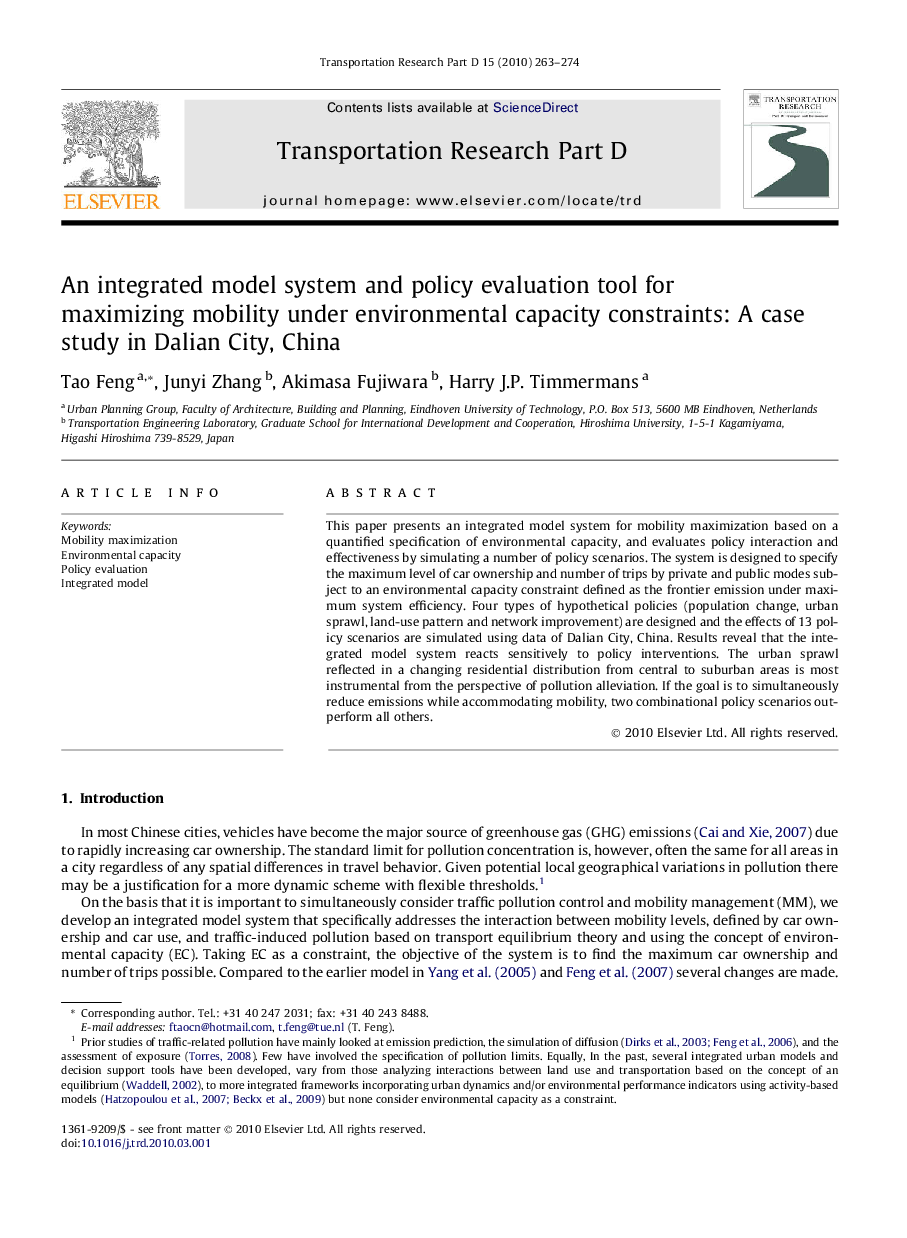| Article ID | Journal | Published Year | Pages | File Type |
|---|---|---|---|---|
| 1066021 | Transportation Research Part D: Transport and Environment | 2010 | 12 Pages |
This paper presents an integrated model system for mobility maximization based on a quantified specification of environmental capacity, and evaluates policy interaction and effectiveness by simulating a number of policy scenarios. The system is designed to specify the maximum level of car ownership and number of trips by private and public modes subject to an environmental capacity constraint defined as the frontier emission under maximum system efficiency. Four types of hypothetical policies (population change, urban sprawl, land-use pattern and network improvement) are designed and the effects of 13 policy scenarios are simulated using data of Dalian City, China. Results reveal that the integrated model system reacts sensitively to policy interventions. The urban sprawl reflected in a changing residential distribution from central to suburban areas is most instrumental from the perspective of pollution alleviation. If the goal is to simultaneously reduce emissions while accommodating mobility, two combinational policy scenarios outperform all others.
